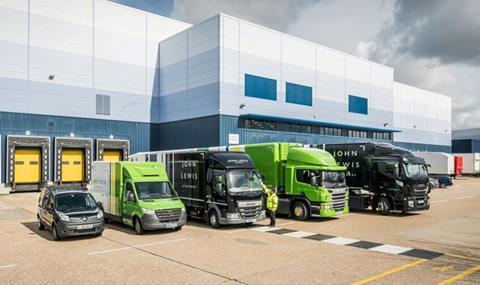
John Lewis Partnership (JLP) is aiming for a fully zero-emission fleet by 2045.
The retailer announced the ambition yesterday (20 March) as part of its wider strategy to eliminate net greenhouse gas emissions across the entire business by 2050 at the latest.
This will see all John Lewis & Partners and Waitrose & Partners delivery trucks, trailers and vans, totalling more than 3,700 vehicles, switching to zero-emission technology.
Transport emissions currently contribute more than 40% to the company’s overall carbon footprint and it will initially focus on reducing HGV emissions, which account for over two-thirds of these.
To achieve this, JLP has already committed to switch more than 500 of its HGVs used for store deliveries to new dedicated gas models fuelled by 100% renewable biomethane. To date, more than 60 gas trucks have already been purchased.
JLP added that as the UK’s electric vehicle infrastructure improves over the coming decades, it will then transition its HGVs to electric, along with its LCVs.
Read more
- John Lewis Partnership commits to diesel-free HGV fleet by 2028
- Wincanton, DPD, John Lewis and Cemex part of DVSA’s earned recognition pilot
- Clipper Logistics and John Lewis form joint venture for Click and Collect work
It has already started electrifying its fleet of vans, and is currently working with technology company Arrival to trial four smart electric home delivery vans.
Six Waitrose & Partners delivery trucks are also currently trialling zero-emission refrigeration units as part of the government’s Low Emission Freight and Logistics Trial.
Justin Laney, partner & general manager of central transport, John Lewis Partnership, said: “Transport is a significant part of our overall carbon footprint so we need to take urgent action to decarbonise our fleet.
"It’s a huge challenge and viable technology and infrastructure still needs to be developed for heavy trucks, but we are committed to leading the way on the road to zero emissions.”
Future of Mobility minister Jesse Norman, said: “I’m delighted the John Lewis Partnership has pledged to go green. Delivering all of their goods to homes across Britain using a zero carbon fleet by 2045 is a great ambition, especially since they have thousands of vehicles.
"I look forward to seeing further businesses following their example, and making zero emission transport a reality.”













